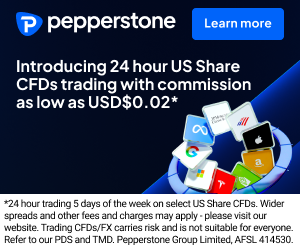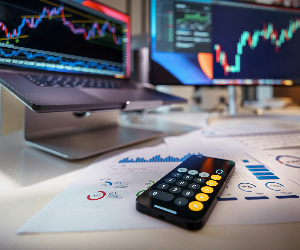METATRADER'S EXPERT ADVISORS: HOW TO SET THEM UP
MetaTrader's Expert Advisors (EAs) offer traders a powerful way to automate their trading strategies. They allow for emotion-free, consistent execution even when you're not actively monitoring the market. This guide delves into everything you need to know before setting up an EA, starting with a detailed overview of their key benefits.

Understanding MetaTrader's Expert Advisors
MetaTrader's Expert Advisors (EAs) are automated trading robots integrated into the MetaTrader platforms (MT4 and MT5). These automated trading systems can execute trades on behalf of traders based on a predefined set of strategies and rules. Understanding how these bots work and their potential benefits is crucial for anyone looking to automate their trading activities. This article examines setting up an already-built trading algorithm on the MetaTrader platform. If you need guidance on how to set up an algorithm, check this article out.
Developing a new trading system that combines robots and technical analysis can be highly effective.
With a portfolio Expert Advisor that EA Studio allows exporting, traders can utilize an EA containing multiple robots, enabling trading several strategies on one chart. This innovative approach simplifies the trading process and enhances efficiency.
Why Use Expert Advisors?
Expert Advisors can bring multiple advantages to your trading strategy. First and foremost, they remove human emotions from trading, which can often lead to costly mistakes. By sticking strictly to their programmed rules, EAs enforce discipline. Also, EAs can monitor the market 24/7, ensuring you never miss a trading opportunity.
Consistency is another pivotal benefit. Unlike human traders who might waver and second-guess their decisions, EAs follow their algorithms to the letter, ensuring a consistent application of your trading strategy. This can lead to more reliable long-term results.
Trading on the M1 chart while monitoring higher time frames can confirm an uptrend. By setting a portfolio EA to open only long trades based on the confirmation from daily and H1 charts, traders can align their strategy with the Dow Theory, which indicates a new uptrend when prices form higher highs and higher lows.
Types of Expert Advisors
Not all Expert Advisors are created equal. There are several types of EAs, each with unique functionalities and specialities. These include signal-based EAs, which use indicators to generate trade signals, and scalping EAs designed to make multiple small trades within short time frames. Additionally, trend-following EAs focus on capitalizing on long-term market trends.
Another popular type is the news-based EA, which reacts to financial news and events. These EAs analyze news releases and make trades based on the data, often capturing significant price movements that follow major announcements.
Utilizing a portfolio EA with multiple strategies, each with its own entry and exit rules can achieve more stable performance. When one strategy incurs losses, others can compensate with gains, balancing the overall results.
Managing multiple EAs can be streamlined using a demo account connected to statistical websites like FXBlue or MyFXBook. This approach helps track performance and identify the best performers before going live.
Key Features to Look for in an Expert Advisor
Traders should consider several essential features when selecting an EA. First, ensure the EA provides robust backtesting capabilities. Backtesting allows you to test the EA's performance against historical data to gauge its effectiveness. Look for EAs with a high win rate and low drawdown in backtests for a more reliable performance.
Customization is another critical feature. The best EAs offer customizable settings, allowing you to tweak parameters to match your trading preferences and market conditions. Additionally, consider the EA's ease of use. A user-friendly interface can make the setup and adjustment process significantly smoother.
The importance of backtesting and demo trading cannot be exaggerated. Traders can ensure the EA performs well in various market conditions by backtesting combined strategies. Demo trading provides an additional layer of security by simulating real market conditions without risking actual money.
Risk Management Capabilities
Risk management is paramount when using any automated trading system. Make sure the EA includes features such as stop-loss orders, take-profit levels, and position sizing options. These tools help manage potential losses and secure profits, reducing the risk of significant drawdowns in volatile markets.
Moreover, consider the EA's reliability and security. Opt for EAs from reputable developers with transparent performance records. Avoid using EAs from unknown sources, which could compromise your trading account and personal information.
Managing multiple EAs using a portfolio Expert Advisor can simplify the process. This tool allows combining several EAs into one, streamlining management and potentially improving overall performance by balancing the strengths and weaknesses of different strategies.
Compatibility with MetaTrader Platforms
Compatibility is another vital factor. Ensure the EA you choose is compatible with your version of MetaTrader, whether it's MT4 or MT5. Some EAs are designed specifically for one platform and may not function properly on the other.
Additionally, check if the EA requires any specific settings or additional plugins. Understanding these requirements can prevent future headaches and ensure your EA operates seamlessly.
Enabling the auto-trading button in MetaTrader 5 is crucial for any EA to function. Without this, no EA will execute trades, regardless of its configuration. This simple yet essential step ensures that the EA can operate as intended.
Setting Up Expert Advisors
Setting up Expert Advisors (EAs) on MetaTrader is straightforward, but specific steps are required to ensure proper functionality.
First, ensure you have a MetaTrader account and the platform installed on your computer.
Then, navigate to the 'Navigator' window, usually located on the left side of the MetaTrader screen, and find the 'Expert Advisors' section.
To add an EA, drag and drop the EA file into the 'Experts' folder within your MetaTrader directory.
Once added, restart MetaTrader to refresh the system and ensure the EA appears under the 'Expert Advisors' section in the 'Navigator' window.
Begin by downloading and copying the EA file.
Then, in MetaTrader, go to File -> Open Data Folder, navigate to the MQL5 folder, and then to the Experts folder. Paste the EA file there.
To make the EA live, restart MetaTrader or right-click on the Expert Advisors tab and hit refresh.
Configuring Your Expert Advisor
Once installed, configuring your EA according to your trading strategy is the next step. Right-click the EA in the 'Navigator' window and select 'Attach to a chart.' This action opens a configuration window where you can adjust various settings such as lot size, trade signals, and risk parameters. Tailoring these settings to match your trading goals and risk tolerance is essential.
Enable live trading by ticking the 'Allow live trading' box. This permission allows the EA to execute trades autonomously. Additionally, check the 'Allow DLL imports' if your EA requires external libraries to function correctly.
Backtesting Your Expert Advisor
Rigorous backtesting is imperative before deploying an EA in a live trading environment. Backtesting provides insights into how the EA would have performed under historical market conditions. To backtest an EA, open the 'Strategy Tester,' select the EA, and choose the historical data period you wish to test against. Configure the testing model to match your preferred settings, such as tick data or every tick movement.
After setting the parameters, click 'Start' to begin the backtest. MetaTrader generates a detailed report, including profit factor, drawdown, and win rate metrics. Thoroughly review these results to assess the EA's effectiveness and identify potential issues that might need adjustments.
Demo Trading
After successful backtesting, the next step is demo trading. Using a demo account allows you to observe the EA's performance in real-time market conditions without risking actual money. This phase is crucial for identifying the backtest results and real-time performance discrepancies.
Monitor your EA closely during this period. Observe its response to market movements and ensure it aligns with its programmed strategy. Make any necessary adjustments to optimize its performance.
Going Live with Your Expert Advisor
Once you're confident in your EA's performance through backtesting and demo trading, it's time to deploy it in a live trading environment. Start with a small amount of capital to mitigate risks. It's advisable to monitor the EA closely during the initial trading period to ensure it operates smoothly and effectively.
Adjust settings as needed based on real-time performance. Market conditions vary, and ensuring your EA adapts appropriately is essential to maintain its effectiveness.
Maintaining and Updating Your Expert Advisor
Consistent maintenance and updates are crucial for your EA's longevity and continued success. Regularly updating the EA ensures it adapts to changing market conditions and integrates new features. Monitor the developer's updates and patches closely and apply them as necessary to keep your EA functioning optimally.
Additionally, periodically review your EA's performance. Analyzing metrics such as profitability, drawdown, and win rate helps identify areas for improvement and ensures the EA remains aligned with your trading goals.
Dealing with Drawdowns
Even the best EAs face drawdowns, i.e., periods of declining account equity. Effective drawdown management is integral to long-term success. Implement stop-loss levels to minimize losses during adverse market movements. Stick to predefined risk parameters and avoid making impulsive changes to the EA's settings during a drawdown.
Consider diversifying your trading strategies and using multiple EAs with varying approaches. This diversification can help mitigate losses by balancing different market conditions and trading styles.
Fine-Tuning Your Expert Advisor
After successfully deploying your Expert Advisor (EA) in a live trading environment, the next step involves fine-tuning it to maximize performance. Fine-tuning is an ongoing process that requires constant monitoring and adjustments based on real-time market conditions. Monitor key performance indicators such as profit percentage, drawdown levels, and trade frequency to identify areas needing optimization.
Regularly evaluating performance metrics allows you to make informed adjustments for better outcomes.
For instance, if you notice that the EA frequently hits stop-loss levels, reviewing the stop-loss parameters and adjusting them accordingly might be necessary. Alternatively, modify the take-profit levels if the EA consistently closes trades prematurely, leaving potential gains on the table.
Optimizing Trade Parameters
Optimizing trade parameters is another essential aspect of fine-tuning, which involves adjusting variables such as entry and exit points, lot sizes, and risk-to-reward ratios.
Use MetaTrader's optimization feature in the 'Strategy Tester' to experiment with different parameter settings and identify the most effective combinations.
Parameter optimization helps enhance an EA's performance by aligning it more closely with market conditions.
Be cautious not to over-optimize, as this can lead to curve-fitting, where the EA performs exceptionally well in historical tests but poorly in live markets. Striking a balance between optimization and generalization ensures the EA adapts well to future market conditions.
Implementing Advanced Indicators
Incorporating advanced indicators can further enhance your EA's decision-making capabilities. Moving averages, Bollinger Bands, and Relative Strength Index (RSI) are indicators that can be integrated into your EA's algorithm. These indicators provide additional data points, allowing your EA to make more informed trading decisions.
Advanced indicators can help refine your EA's strategy, leading to more accurate and profitable trades.
When adding indicators, ensure they complement your existing strategy rather than complicate it. Too many indicators can lead to conflicting signals, confusing the EA and resulting in suboptimal trade execution.
Monitoring and Adjustment
Continuous monitoring is crucial to an EA's success. Real-time monitoring allows you to track the EA's performance and make necessary adjustments promptly. Utilize the 'Journal' and 'Trade' tabs in MT to scan the trade's entry and exit points and any errors that might occur during the process.








